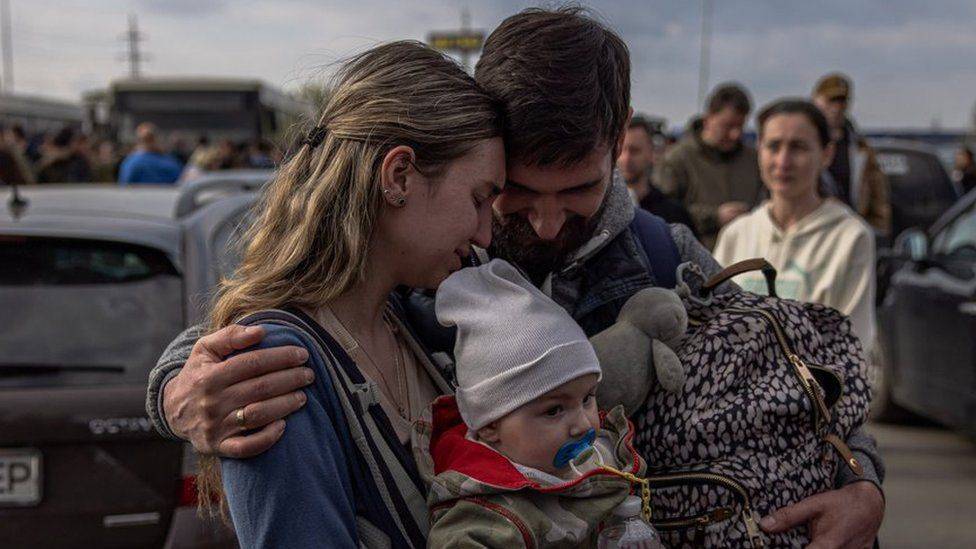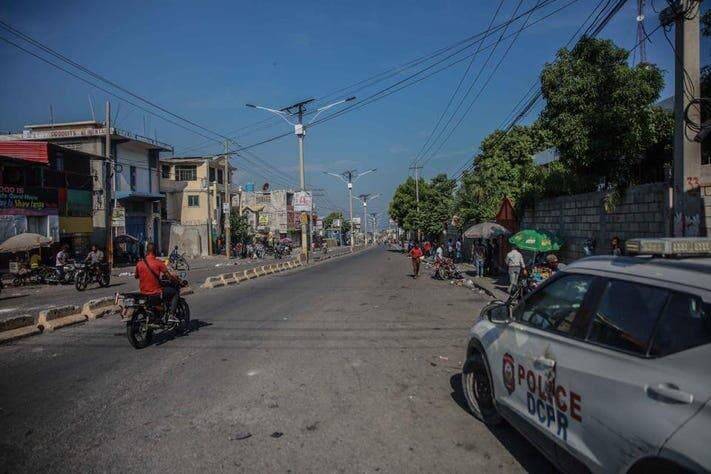Evacuees from Mariupol steel plant 'We were losing hope that we would ever get out'

Among them were 69 people sheltered in bunkers beneath the massive Azovstal steelworks for months.
It's the first time a humanitarian corridor has been successfully agreed to get them out of the steel plant.
"We were losing hope that we would ever get out,".
Before this evacuation, repeated attempts to negotiate their safe release had failed.
Hundreds of civilians remain trapped inside the plant, according to Ukrainian fighters there. It's not clear whether more attempts will be made to rescue them.
After the evacuees left on Sunday, fighters at the plant said Russian forces immediately resumed shelling.
There were hugs and tears of exhaustion and relief as the women and children arrived in Zaporizhzhia.
Katarina stepped off the bus into the sun with everything she now owned stuffed in a small backpack. Her two children, Aged six and 11 rubbed their eyes, exhausted.
For two months, they had lived in the hidden depths of the steel plant in Mariupol as Russian bombs pounded the site. The only supplies were rations handed down by Ukrainian soldiers.
"From the morning and during the night, we were bombarded. Artillery, rockets, airstrikes," Katarina said.
"Our children couldn't sleep. They were crying. They were scared. And us as well.
"There were several times when we were losing hope that we would ever get out. We are happy to be in Ukraine."
But the war had taken its toll on their home city, which they saw the wreckage of as they left: "What we saw were just boxes with massive black holes in them. The apartment blocks are gone. Their remains are there."
Another evacuee, Irene, had her 17-year-old daughter by her side - and found that, at least, was some comfort. "We lived in the hope that every day would be the last day in this hell. That we would go home to a peaceful Mariupol, but Now it is non-existent," she said.
The operation carried out by the United Nations and the Red Cross has been complex - and at times, dangerous.
UN staff on the ground found the area littered with landmines. At one point, they had to pull back after an artillery strike.
"When the team went forward to wave a flag and try and bring these people out, several mines had to be cleared both from the Ukrainian side - the steel plant - and the Russian side," said Sebastian Rhodes Stampa, the UN team's operational lead.
"There was then some mortar fire; I don't know where it came from. I don't know who fired it. It stopped fairly quickly."
He said he had found the experience "deeply humbling".
"They came out, and they saw the city they presumably grew up in destroyed. There are graves on the pavement and in every grass plot you can find," he said.
"They were horrified. You've got to understand, they've been underground for two months, and they haven't seen the news.
"There was a six-month-old baby there who had never seen grass, he'd been born during the winter and he was astonished how green the grass was. He wanted to play with and fiddle about with it."






0 Comment